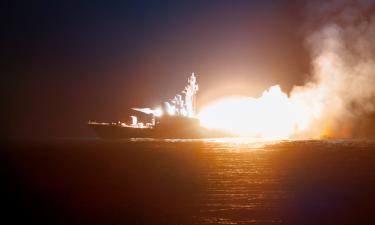Lower losses seen for airlines in 2006: industry group
Higher fares and lower labor costs will help the global airline industry combat soaring jet-fuel prices and trim its losses in 2006, an industry group said Wednesday.

The head of the Geneva-based International Air Transport Association, Giovanni Bisignani, projected a $2.2 billion (Ђ1.82 billion) loss for the global airline industry in 2006, down from $6 billion (Ђ4.97 billion) in 2005, as profitability among European and Asian carriers is expected to offset narrower losses for U.S. airlines.
Bisignani spoke at an industry luncheon in New York. A copy of his speech was posted on the association's Web site.
Bisignani forecast that U.S. airlines will lose $5.4 billion (Ђ4.47 billion) in 2006, assuming world oil prices average $57 (Ђ47.23) a barrel. In 2005, U.S. carriers lost some $10.8 billion (Ђ8.95 billion) (excluding United's $16.7 billion (Ђ13.84 billion) fourth-quarter restructuring costs) on average oil prices of more than $56 a barrel.
Light sweet crude futures fell 57 cents on the New York Mercantile Exchange on Wednesday, closing at $61.77 a barrel, or 9 percent above last year. The price of jet fuel in New York was roughly $1.90 a gallon, or 16 percent higher than last year.
The soaring price of jet fuel, along with inefficient operations, helped thrust money-losing U.S. carriers into Chapter 11 reorganization last year, including Delta and Northwest, which are still restructuring under the protection of a bankruptcy court.
High fuel prices are likely to stick around, Bisignani said, though he blamed the petroleum industry for contributing to the problem by not investing enough of its record profits in new oil-refining capacity.
Bisignani said the industry's break-even oil price has climbed to about $48 a barrel up from $22 a barrel in 2003 thanks to several years of aggressive cost-cutting by airlines, often in bankruptcy court. He also credited carriers with keeping a lid on their carrying capacity, which has helped to boost the percentage of seats filled and thereby facilitate price increases.
Just last week Southwest Airlines Co. led a broad fare hike across the airline industry, raising ticket prices by up to $10 (Ђ8.3) each way to offset surging fuel costs. The move was matched by most other major U.S. airlines, including: American Airlines, a unit of AMR Corp.; UAL Corp.'s United Airlines; Delta Air Lines Inc.; Continental Airlines Inc.; Northwest Airlines Corp.; and US Airways Group Inc.
One area where the U.S. airline industry shines, Bisignani said, is in safety. Globally, the accident rate in 2005 was 0.76 per million flights. But the rate for U.S. carriers was just 0.2 per million flights.
The Air Transport Association, a Washington-based trade group, estimates that U.S. carriers took in 12.87 cents of revenue per passenger for each domestic mile they flew in February. That is up 12 percent from a year earlier.
Calyon Securities airline analyst Ray Neidl attributes this rise in so-called revenue per available seat mile to a higher percentage of seats filled. Neidl said in a report that 76.2 percent of seats were filled on major carriers' domestic flights in February, compared with 73.2 percent a year earlier, reports AP.
O.Ch.
Subscribe to Pravda.Ru Telegram channel, Facebook, RSS!





